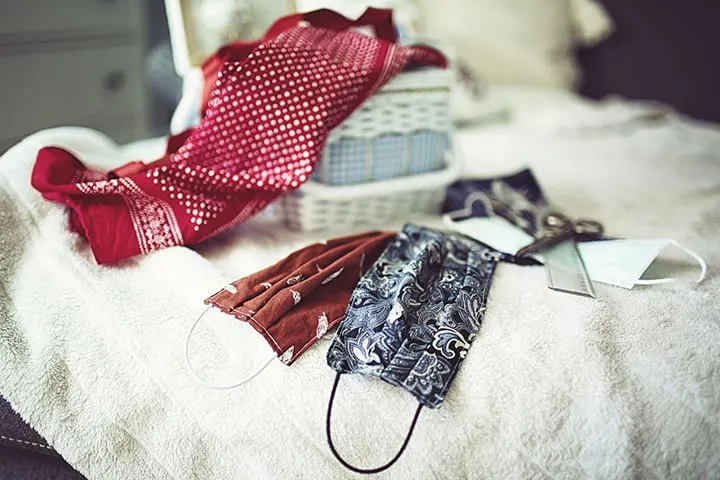Which Homemade Face Mask is Best, and How Do I Wear One?

By Dani Vaughan
To reduce the spread of COVID-19, the CDC has recommended that people wear cloth face coverings in public settings, especially when social distancing measures are hard to maintain.
The CDC has been highly recommending face coverings in public, while in certain states, it has become mandatory.
With medical-grade and surgical masks being reserved and recommended for healthcare worker use only, many have turned to purchasing masks or making homemade face coverings. Of these homemade options, which is the best? Studies comparing the effectiveness of different types of masks are still new, one such study was conducted by Florida Atlantic University comparing many of the common non-medical face masks and their effectiveness.
They worked to duplicate how a person would cough or sneeze and studied how well the mask altered the direction and path of droplets produced by those actions. Three types of masks were analyzed:
1. A well stitched, well-fitted, 2-layer quilting fabric mask
2. A loosely folded, homemade mask (made with a t-shirt or handkerchief)
3. A cone-style, non-sterile commercial mask that is usually found at pharmacies
Researchers used a laser to detect the droplets in the simulated cough or sneeze with each of the different types of masks. Each variation was measured and the distance that the droplets traveled determined which mask was the most effective. In their testing, they discovered that the 2-layer quilting fabric mask had the best results in reducing the distance that the droplets traveled. Research and testing of face coverings is still new, and more testing and experiments will be completed in the future to tell us how well these different types of masks work.
In addition to this knowledge of homemade face coverings, it is just as important to note that they are only effective if they are correctly used. There has been lots of talk about face masks and that we should be wearing them, but not much is said about the proper way to wear one. An article in the New York Times recently offered some tips and advice on properly wearing a mask:
1. Wash your hands properly before putting on your mask with soap and warm water for at least 20 seconds.
2. Don’t touch the fabric part of the mask. Use the ear loops to put on and remove the mask.
3. If using a pleated mask, the folded side goes down towards the chin.
4. Pick or make a mask that has at least 2-layers. Hold your mask up to the light to see how much light gets through, the less light, the better!
5. Your mask should fit snugly with no gaps. Be sure to tighten it to eliminate the gaps if there are any.
6. If you wear glasses, fit the top of the mask under the lower lens allowing the glasses to keep it in place. Also, use anti-fog cleansers on your lenses to keep them clean.
7. Consider the type of mask you wear; a cotton mask may be more comfortable.
8. Wash your mask or allow them to air dry for 24 hours before re-using them.
9. Have more than one mask, so you will always have one when needed.
10. Wear your mask! It will help protect yourself and others, but only if you wear it.
We touch a variety of surfaces throughout the day and have no idea who may have touched them before us. When we go to the grocery store, fill our car with gas, or open the door to our favorite restaurant, we are always touching things. Wearing a mask and practicing social distancing when we can, helps us slow the spread of germs.
